I've checked all sulutions described in Converting ImageProxy to Bitmap and the only one that works in many devices is the java version of this class, so I'm using the class below to convert an ImageProxy to a Bitmap:
public class YuvToRgbConverter {
private RenderScript rs;
private ScriptIntrinsicYuvToRGB scriptYuvToRgb;
private int pixelCount = -1;
private byte[] yuvBuffer = null;
private Allocation inputAllocation = null;
private Allocation outputAllocation = null;
public YuvToRgbConverter(Context context) {
rs = RenderScript.create(context);
scriptYuvToRgb = ScriptIntrinsicYuvToRGB.create(rs, Element.U8_4(rs));
}
@Synchronized
public void yuvToRgb(Image image, Bitmap output) {
// Ensure that the intermediate output byte buffer is allocated
if (yuvBuffer == null) {
pixelCount = image.getCropRect().width() * image.getCropRect().height();
// Bits per pixel is an average for the whole image, so it's useful to compute the size
// of the full buffer but should not be used to determine pixel offsets
int pixelSizeBits = ImageFormat.getBitsPerPixel(ImageFormat.YUV_420_888);
yuvBuffer = new byte[pixelCount * pixelSizeBits / 8];
}
// Get the YUV data in byte array form using NV21 format
imageToByteArray(image, yuvBuffer);
// Ensure that the RenderScript inputs and outputs are allocated
if (inputAllocation == null) {
// Explicitly create an element with type NV21, since that's the pixel format we use
Type elemType = new Type.Builder(rs, Element.YUV(rs)).setYuvFormat(ImageFormat.NV21).create();
inputAllocation = Allocation.createSized(rs, elemType.getElement(), yuvBuffer.length);
}
if (outputAllocation == null) {
outputAllocation = Allocation.createFromBitmap(rs, output);
}
// Convert NV21 format YUV to RGB
inputAllocation.copyFrom(yuvBuffer);
scriptYuvToRgb.setInput(inputAllocation);
scriptYuvToRgb.forEach(outputAllocation);
outputAllocation.copyTo(output);
}
private void imageToByteArray(Image image, byte[] outputBuffer) {
assert (image.getFormat() == ImageFormat.YUV_420_888);
Rect imageCrop = image.getCropRect();
Image.Plane[] imagePlanes = image.getPlanes();
for (int planeIndex = 0; planeIndex < imagePlanes.length; ++planeIndex) {
Image.Plane plane = imagePlanes[planeIndex];
int outputStride = 0;
int outputOffset = 0;
switch (planeIndex) {
case 0:
outputStride = 1;
outputOffset = 0;
break;
case 1:
outputStride = 2;
outputOffset = pixelCount + 1;
break;
case 2:
outputStride = 2;
outputOffset = pixelCount;
break;
default:
return;
}
ByteBuffer planeBuffer = plane.getBuffer();
int rowStride = plane.getRowStride();
int pixelStride = plane.getPixelStride();
Rect planeCrop = imageCrop;
if (planeIndex != 0) {
planeCrop = new Rect(imageCrop.left / 2, imageCrop.top / 2, imageCrop.right / 2, imageCrop.bottom / 2);
}
int planeWidth = planeCrop.width();
int planeHeight = planeCrop.height();
byte[] rowBuffer = new byte[plane.getRowStride()];
int rowLength = planeWidth;
if (pixelStride != 1 || outputStride != 1) {
rowLength = (planeWidth - 1) * pixelStride + 1;
}
for (int row = 0; row < planeHeight; row++) {
planeBuffer.position((row + planeCrop.top) * rowStride + planeCrop.left * pixelStride);
if (pixelStride == 1 && outputStride == 1) {
planeBuffer.get(outputBuffer, outputOffset, rowLength);
outputOffset += rowLength;
} else {
planeBuffer.get(rowBuffer, 0, rowLength);
for (int col = 0; col < planeWidth; col++) {
outputBuffer[outputOffset] = rowBuffer[col * pixelStride];
outputOffset += outputStride;
}
}
}
}
}
}
This class works as expected in many devices but in some devices I get a green bitmap.
Correct conversion in many devices
Green bitmap in some devices
So my question is how can I fix this problem? Is there any better way? Thanks

